5 Chapter 7: International Relations
It is a large and comprehensive area of study that in some academic contexts is a separate discipline from political science. As a separate discipline, international relations (or what is sometimes called international studies, international affairs, area studies, global affairs, or global studies) is a rich interdisciplinary field of study that draws direct connections to other disciplines such as geography, psychology, demography, history, economics, and feminism, among others. In academia outside the UK and the US, the study of political science is often exclusively the study of international relations. In American academia especially, international relations is typically considered a sub-discipline of the broader field of political science, and for our purposes here, we will view international relations in this context. The academic study of international relations has been traditionally dominated by positivist inquiry—it seeks a descriptive and objective understanding of our global world and the forces and relations that shape the international context. Positive statements, in this sense, are contrasted with normative statements: the former are statements that describe what is, whereas the latter are statements that directions for what ought to be (see the normative basis of political theory in Chapter Six for more discussion on this matter).
But from a public policy perspective, international relations is normative in its inquiry, directing policy shapers toward actions that can better the world. Broadly speaking, public policy are a set of directions for how executive bureaucracy acts in the execution of law, and so defines what “should be” in terms of state action, not what is. Take, for example, the issue of nuclear weapons. An academic and positivist approach may objectively determine the number of nuclear weapons in the world and which countries possess them. From a policy perspective, however, international relations provides a field from which a number of policy proposals are presented—how nuclear weapons proliferation should be curtailed, how to keep certain rogue actors from obtaining nuclear weapons, or how to limit the threat of nuclear weapons in the international environment. International relations theory (theories that govern relations in an international environment) have traditionally been positive (realist, liberal, and regime theory all have positivist foundations), but post-positivist theories (such as constructivist, Marxist, feminist IR theories) have emerged as a significant field of inquiry in the sub-discipline. Below, we will discuss four prominent international relations theories, three positivist (realism, liberalism, and institutionalism) and one post-positivist (feminist IR theory). But before we do, a discussion of foreign policy and its tools and objectives is warranted.
Foreign Policy
Foreign policy can be defined as a country’s national interest pursued abroad. Central to the definition, of course, is the concept of national interest—foreign policy is not merely a set of unbiased relations between countries, it is directed policy that seeks to benefit the nation through economic, political, and military means. The distinction between tools and objectives is essential toward understanding how foreign policy works—tools are the strategies, policies, and actions that are used to help realize specific objectives, goals, or outcomes. There are both economic, political, and military tools and economic, political, and military objectives, and these types of tools and objectives can interact in a number of complex ways. Military tools can help achieve certain economic objectives, economic tools can achieve political objectives, and so on. Some tools may further certain objectives but make other objectives more difficult to achieve. For example, a nation may use a strong military presence in a region to force foreign nations into opening up trade, but this may come at the cost of political objectives in the long run, such as peace diplomacy. In other words, economic, political, and military tools and objectives are intimately bound up in one another—we cannot isolate these factors and expect to have a deep understanding of foreign policy. Instead, we must understand the relationship between these types of tools and objectives. When we observe foreign policy tools used by state actors, we should always ask, “what’s the objective?”
Let’s look at different objectives first, since these are the goals state actors intend to achieve in an international environment. Only then can we have a better understanding of what sort of tools are available for achieving those objectives. Political objectives often rest on influence—the ability to further national interests by influencing foreign actors. To this end, political objectives are often policies that benefit specific ideologies or systems of government and harm others. Liberal democracies, for example, may have the political objective of strengthening liberal democracy around the world. Illiberal governments, on the other hand, may make it a political objective in foreign policy to strengthen and aid various illiberal elements in foreign countries.
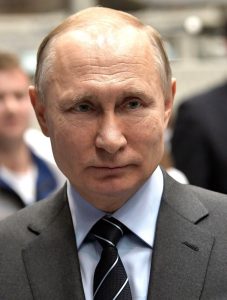
President Vladimir Putin of Russia, for example, stated in 2019 that liberalism, the dominant ideology of the 20th and 21st centuries, has become obsolete. Liberalism in this context is an ideological commitment to democratically free governments that enshrine rights and liberties for their citizens, along with a broader commitment to free markets and the value of multiculturalism and toleration. The idea that liberalism is now obsolete is not just an observation by Putin—a core political objective in Russian foreign policy is the strengthening such challenges to liberal democracy. Moscow has provided diplomatic and economic support to political parties across Europe that advocate for anti-immigration and isolationist policies and warn of the dangers of multiculturalism.
Military objectives principally rest on self-preservation—to protect national sovereignty, a system of government, and physical security through military power. Without sovereignty, a chosen system of government, and physical security, the state is existentially threatened. As we shall see below, the imperative of self-preservation is a key concept in the IR theory of realism. Militaries are the chief means through which national defense and the physical security of the state and people are secured, but the notion of a standing army—a relatively permanent, professional fighting force—is not without its detractors, both historically and presently. Countries such as Iceland, Costa Rica, and Panama have no standing armies, but most of these include some form of voluntary defense organization. Some of the American founders believed that standing armies were antithetical to a free and republican form of government, namely Thomas Jefferson. Nevertheless, professional militaries are a fixture of our political world and wield tremendous influence over political and economic systems. By military objective, we are not referring to the strategic decisions that take place within a military chain of command (defending a position in a battlefield or engaging and destroying the enemy, etc), rather we refer to the political and national value a military provides. Advancing military objectives is not just about armed conflict—deterrence is a key military objective that can also further both political and economic objectives in foreign policy. The presence of a military base in a hostile or unstable region can deter rogue actors, political violence, and acts of aggression, while facilitating economic activity and political cooperation. The global devastation that nuclear weapons are capable of also acts as a deterrent—the United States and Russia both have an enormous nuclear warfare capacity, enough to ensure mutually-assured destruction and a strong deterrence to using those weapons.
Economic objectives in foreign policy include protectionism—economic policies that designed to insulate a national market from the effects of international trade and global economic activity—and liberal corporate capitalism, which is predicated on private firms openly open trading in the international marketplace and global finance and investment.
Broadly speaking, we may also include economic growth as a foreign policy objective, for both protectionism and liberal capitalism are intended to induce some form of economic growth. The growth model in economics suggests that the main goal of economic activity is to spur a growing economy, generally defined as increasing a country’s GDP or GDP per capita. There are challenges to the growth model—some economists argue that well developed democratic capitalist societies should instead focus on sustainability, not growth, as the measure of a successful economic policy. Indeed, most of the countries with high economic growth are developing countries undergoing rapid industrialization. Well developed economies tend to flatten out in terms of growth year-to-year. Lastly, when thinking about wealth as an economic objective, it’s important to ask who benefits from increases in wealth. Some governments are quite wealthy despite the fact that a large percentage of the population lives in poverty. The Russian government, for example, runs a strong surplus across all sectors of government and carries little public debt. Among the Russian people, however, there remains a double-digit poverty rate and chronic underemployment, and the Russian government spends comparatively little on education, healthcare, and infrastructure.[1] Some analysts have suggested that the personal wealth of President Vladimir Putin makes him one of the richest individuals in the world.[2] Conversely, some governments in the world carry large amounts of national debt and consistently run deficits, yet the GDP per capita is high and there is robust human resource spending on things like education, healthcare, and infrastructure.
Political, Military, and Economic Tools in Foreign Policy
Having covered objectives, let’s turn to the tools and instruments at a government’s disposal to realize those foreign policy objectives. The key political tool for any government is diplomacy—the day-today communication between governments in the world. Influence is often achieved through diplomatic channels in which governments express preferences and seek benefits through cooperation. Institutions of diplomacy are usually separate from military institutions in government and a key distinction between diplomatic and military power is crucial for understanding foreign policy objectives. Diplomacy is often called “soft power,” as it is the power to persuade and influence through cooperation and compromise.
Military power is often referred to as “hard power,” as it is the power to achieve foreign policy objectives through deterrence, threat, and force. The US State Department is the main channel of diplomacy in US foreign policy. The State Department is responsible for facilitating communication with foreign governments, establishing and maintaining embassies abroad, establishing or terminating treaties with foreign governments, and overseeing the process by which American citizens travel abroad and foreign nationals travel to the US.
Another set of important political tools in foreign policy are treaties. There are two main forms of treaties—bilateral treaties between two countries and multilateral treaties between more than two countries. Bilateral treaties are easier and a common way for two countries to come together on specific military, economic, or political issues. Bilateral nuclear weapons treaties between the United States and the Soviet Union, for example, were crucial foreign policy tools that were instrumental in decreasing the heightened state of conflict in the Cold War. Multilateral treaties tend to be harder (since there are more stakeholders and thus more interests) but provide a more comprehensive agreements that often have political, economic, and military objectives. The North Atlantic Treaty Organization (NATO) between the United States and European countries is a prime example—NATO is a military alliance and so achieves defense and deterrence, but it also facilitates economic activity and diplomacy among the member nations, bringing them closer together on a number of issues.
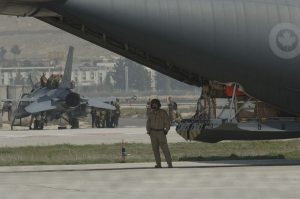
An obvious military tool in foreign policy is the capacity to use force and the prospect of warfare, either targeted, general, symmetrical, or asymmetrical warfare. The capacity for force, as previously mentioned, is a key tool for the objective of deterrence—the presence and capacity of a military can deter without actually using force or engaging in warfare. There are a number of other military tools at a government’s disposal prior to the option of direct combat. Non-combat operations are a common foreign policy tool, achieving the political objectives of nation and state building. Building roads and bridges, repairing electric or water services, facilitating peace in local neighborhoods by mediating communication between powerful stakeholders, protecting valuable national resources, all these non-combat operations are common military tools that achieve both political and economic objectives. Another military tool that stops short of direct combat is surrogate warfare, in which a government uses guerrilla forces, mercenaries, rebels, or other so-called surrogates to engage the enemy. Surrogate warfare may allow a government to use the leverage of violence and force while also keeping diplomatic channels open with the hostile powers in question. Afghanistan, Angola, Korea, Mozambique, and Vietnam were all Cold War proxy wars in which the American and Soviet superpowers used surrogates as military tools. Throughout these engagements diplomatic channels between Washington and Moscow remained open. It’s hard to imagine those diplomatic channels would have remained open had the American and Russian militaries met on an open battlefield.
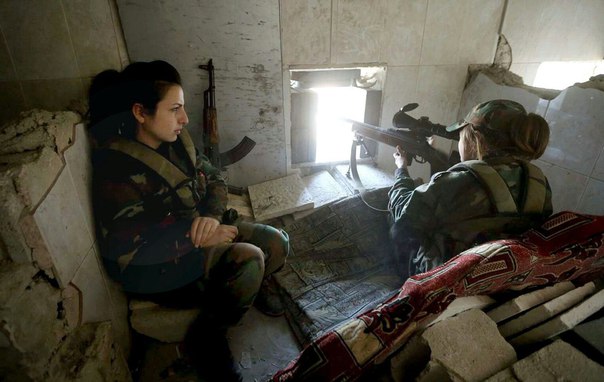
Lastly, governments may engage in direct military warfare as a tool to realize certain foreign policy objectives. Military conflict in the past has often been characterized as traditional, symmetrical warfare, in which two conventional militaries of somewhat equal capacity and strength meet on a battlefield—uniformed combat troops against uniformed combat troops, tanks against tanks, fighter planes against fighter planes, and naval forces against naval forces. Although conflicts in the 21st century often use traditional weapons and tactics, military combat is increasingly characterized by asymmetric warfare such as cyber warfare, surrogate operations, terrorism (violent acts or the threat of violence against non-combatants in order to instill fear and advance specific objectives), and targeted military strikes. Throughout the Cold War, local civil wars were often used as proxy conflicts between larger powers, and this continues today. The civil wars in Syria and Yemen are largely proxy conflicts between two key powers in the Middle East—Saudi Arabia and Iran, which could be regarded as a proxy conflict in itself between the United States (in support of Saudi Arabia) and Russia (in support of Iran). The civil war in the Ukraine can also be regarded as a proxy war between the West and Russia.
Economic tools fall along the lines of protectionist or liberal capitalist objectives. Key protectionist economic tools are embargoes (the refusal to trade with a country or bloc of countries), tariffs (taxing certain imports), and quotas (limited the number of certain imports or from certain countries). Throughout the Cold War and into the 21st century, for example, the United States put in place a trade embargo on the country of Cuba, one of the last remaining communist countries in the world. Conversely, the main tool to realize liberal capitalist objectives is the concept of free trade, in which free market countries seek to break down protectionist barriers abroad in order to tap resources, markets, and labor in those foreign countries. Free trade is often a tool to achieve political objectives under the theory that free markets facilitate a more free and democratic society. As we discussed in the section on the conditions and causes of democratization in Chapter Five, however, there is little evidence to suggest that freeing up markets leads to a more free and democratic society.
Lastly, the work of foreign policy requires a set of theories that give us assumptions and insights into what drives cooperation or conflict among states in an international environment. Theories of IR provide those assumptions, and suggest that state actors are likely to behave in certain ways under certain conditions. Let’s overview four prominent theories in international relations by identifying the differences and similarities that exist between them.
Theories of IR: Realism
Realist theory in international relations is predicated on the absence of authority that governs the international system. In short, the international environment is one in which anarchy is the norm—states are sovereign in themselves and seek either coercion or consent to realize their interests in the international system. There is no governing international authority to determine state behavior in a global context, nor can there be any true governing international authority so long as states maintain sovereignty and autonomy from one another. The overriding principle in a realist environment is state survival and preservation, and because of this, power is the only means through which preservation is maintained in an anarchic environment. Indeed, realist theory posits that international organizations—such as the United Nations—are merely an institutionalized means through which states project power and bring about coercion over other states. Conflict is the norm in realist theory, not cooperation. For the realist, cooperation itself is also just a means to project power. Power can be projected in a number of ways—military, economic, or diplomatic power—but always with an intention to bring about a coercive effect that compels compliance from foreign actors.
There are four assumptions that underpin realist theory. First, the main objective of realist theory is preservation and survival. In an anarchic system, there is always the threat of foreign invasion and occupation. The main goal of the state is to mitigate against the threat by projecting power such that other states know not to mess with you. Second, states are rational actors in this anarchic environment—they are aware that there are no governing norms in the international system and that survival is the key, so they will always act in such a way as to mitigate against any threats to survival. State actors know their preferences, are able to order those preferences, are aware of all available information, and act in such a way to further their preferences. Third, states must assume that no state really knows for certain what other states will do (only that they will act rationally) and they must assume that foreign states have a degree of power—military, economic, or diplomatic—that they are prepared to project in an international system. Fourth, following from the assumptions above, it is reasonable for state actors to assume that the more power you have the more you will likely determine international arrangements and the overall direction of the international environment. In other words, Great Power politics is the norm in an international environment—actions of great powers prove to be the decisive and dominant actions in the global sphere.
There is some disagreement among IR realists and this disagreement broadly falls into two approaches—the hegemonic approach and the balance of powers approach. The hegemonic approach takes all the above assumptions and argues that state actors should pursue domination of the international environment and seek to be the overriding hegemonic force that determines most of the direction and characteristics of the global system. Someone is bound to consolidate power and dominate the global system, argue hegemonic realists, and so it might as well be you. The balance of powers approach, on the other hand, argues that pursuing a position of hegemony can undercut the interests of the state by creating more animosity and conflict than otherwise, and that states can best bring about the realist goal of survival by seeking a balance of competing powers that will discourage state actors from attacking one another. Anarchy may be the norm of the international system, argue balance-of-power realists, but states should nonetheless seek stability through the mutual assurance of balanced power in the world.
Theories of IR: Liberalism
Where the international arena is characterized by conflict and anarchy in the realist perspective, the liberal perspective is characterized by cooperation and the motivation of peace. Liberalism also emphasizes that, while states are sovereign and often act in their own self-interest, individuals, private parties, international organizations, and multinational corporations are important mediating entities in the international arena too often overlooked by realists. The United Nations is not simply a crude reflection of self-interested states, but an international ideology predicated on cooperation and peace.
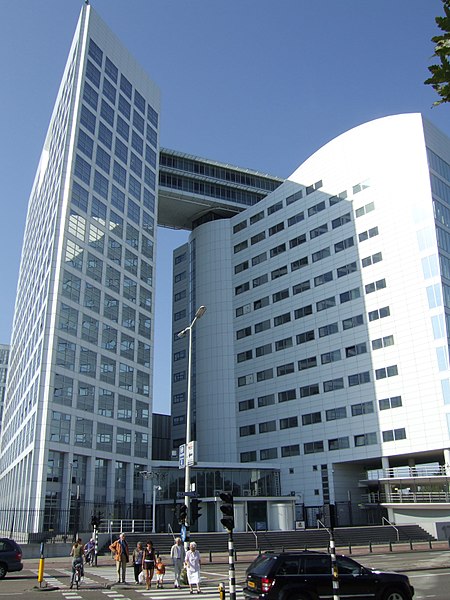
A prime example of liberal IR theory in practice is the International Criminal Court (ICC), an international body with authority to supersede national sovereignty and and bring war criminals and perpetrators of crimes against humanity to justice. In addition, unlike realist theory, liberal IR theory stresses the interdependence among states—states rely on other states much more than realism suggests. In addition, liberalism critiques the realist view that states are unified actors. There are, rather, often competing interests within a state trying to steer foreign policy in different directions.
Consider the economic relationship between the United States and China, for example. Although far from political allies, these two dominant global powers have a deeply interconnected economic relationship such that any major depression in one country will likely effect the other to a very large extent. In sum, liberal IR theory suggests the following: states have a rational interest in cooperation because they recognize such cooperation can bring about positive sum games that benefit both parties; individuals, international organizations, and multinational corporations play a crucial role in shaping the global environment, not just states; and, lastly, states are not just autonomous, unified, and self-interested actors operating within an environment of anarchy, but rather states have competing interests within them and are interconnected to each other in such a way that reliance is more the norm that autonomy.
There are some similarities between realism and liberalism: both affirm the rationality of actors in the global arena, and both theories have underlying assumptions that inform the broader theoretical approach. In liberal IR theory, there are roughly four underlying assumptions. First, state action in the global arena is a product of unique national characteristics of those states, and very often do not project a unified set of interests. Second, because of the first assumption, it stands to reason that not all states are going to act the same in an international environment. Third, non-state actors, such as individuals or private groups, are more fundamental to global politics than states. We can also see how this follows from the first assumption, and suggests that states themselves are merely a composite of dominant individuals and groups that form the state. Fourth, and perhaps more foundational than the other assumptions, individuals essentially perceive themselves as good and basically behave as much, thus would rather seek cooperation rather than conflict.
Consider this last assumption in your own perception of human behavior—do you think humans essentially see themselves as good? On the one hand, it may be impossible to find a human being who does not, deep down, fundamentally view themselves as a good person. On the other hand, humans clearly are capable of destructive, horrible behavior. This may be a matter of fear and existential threat: when humans commit terrible acts it is likely driven by impulses of fear and a (perhaps only perceived) threat to their own survival. Thus, in the final analysis, the efficacy of realist and liberal theories may both be sound and simply a matter of perception. State actors may see a world filled with threat and act in such a way that is a direct response to this perception of the global environment. On the other hand, states may see a global environment in which cooperation is possible and mutually beneficial agreements are laid out on the negotiating table. Successful partnership may strengthen this perception of cooperation, facilitating positive reinforcement of cooperation among state actors.
Theories of IR: Institutionalism
Institutionalism in IR is a bit of a mixture of realism and liberalism. It shares much of the basic assumptions of realism—states are rational and self-interested, the environment is anarchic and no state knows what the others will ultimately do—but in using game theory to show how mutually beneficial interactions come about, institutionalism posits that cooperation in the international environment is possible. In essence, cooperation is a rational and self-interested outcome. As the name suggests, institutionalists argue that the norms, rules, and procedures of institutions can overcome the anarchic tendency toward conflict. This is a different account from liberalism in two ways: one, the underlying assumptions are different (where liberalism sees an inherent tendency toward cooperation, institutionalism essentially agrees with the realist account of the global environment), and, two, institutionalism provides an account that is not about individuals but about the rules and norms of institutions. Recall our discussion of game theory from Chapter One, in which indefinite iterations of Prisoner’s Dilemma suggests a specific winning strategy—Tit-for-Tat—is successful because it is kind, retaliatory, forgiving, and clear. This is foundational to the institutionalist view, which asserts that, while anarchy is a basic norm, when we stretch out of the timeline of interactions in the global community, we essentially come to an environment in which cooperation has clear advantages.

Institutions have a number of advantages that incentivize cooperation. First, institutions allow us to retain information about state behavior so that we learn from past interactions. In short, institutions retain knowledge that is useful in facilitating cooperation. Second, it is efficient, since it is more costly to have one-off transactions. Institutions effectively create known pathways through their norms and rules that smoothes out the process and facilitates cooperation. Third, because negotiations happen over a set period of time, institutions make it harder for a state actor to take advantage of others in negotiations. If a state actor takes certain benefits but reneges on their commitments, others will be less forgiving of that state actor in the next round of negotiations. In sum, institutionalism in IR sees the same basic set up as realism, but agrees with liberalism that cooperation is possible. This cooperation is possible not because people are basically good and tend toward cooperation, but rather that institutions provide norms, rules, and procedures that make it easier for state actors to identify and seek the benefits of cooperating.
Exercise 7.1
Take one of three political issues in international relations today: the US–China trade talks, the civil war in Syria, or US-Iranian relations, particularly in regard to nuclear weapons. Which of the three IR theories best explain the dynamic that is taking place in one of these three issues? Normatively, which of these theoretical approaches should state actors pursue to deal with the problem?
Theories of IR: Feminism
Feminist theory in international relations calls attention to the role gender plays in the political dynamic of global interactions. It is meaningful, IR feminists argue, that men disproportionately dominate the international political system. One outcome of this male domination is the fact that, when discussing war and political violence, men consistently overlook the fact that women and children are the main victims of such violence. Women and families tend to shoulder much of the suffering and pain political violence causes, and the men who dominate global relations in turn do not regard political violence as serious of a threat as it is. Take, for example, the terrible devastation wrought by the Syrian civil war—women and families were the hardest hit by this political violence and constituted the majority of those migrants fleeing Syria. Refugee camps are filled with women tended sick, malnourished, and dying children. IR feminists argue that the concept of security must be expanded beyond merely state security to encompass human security. When states accommodate for a greater role for women in political life, the international environment would take greater account of political violence and its effect on societies.
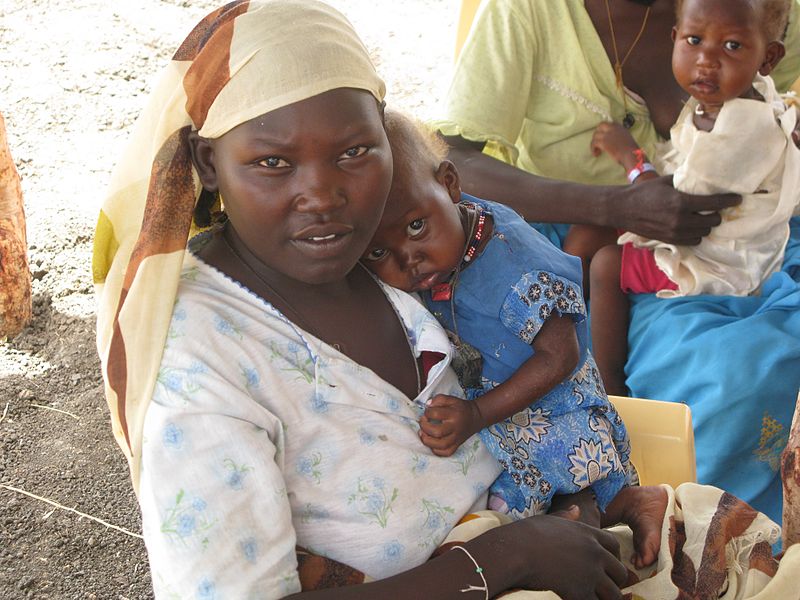
When we think of civil wars in Syria or Yemen today, we tend to think of battlefields, missiles and drones, men with guns. The suffering that is often ignored is a mother struggling to feed children, a woman dying of cholera, and families fleeing bombs. It is not just political violence that ignored the role of women and gender—a masculinized political society tends to divorce all political relations from human emotion and suffering. Thus economic transactions, political negotiations, and military strategy seek “preferred outcomes” without taking into account how it effects human society. A crucial assumption lies behind this theoretical framework: states are not simply institutions, certain sets of preferences, or abstract individuals that we can isolate and understanding through positivist and empirical analysis. States are rather constructions of values and ideologies that reflect normative positions on the human experience and its relation to power. Because of this, we must be attentive to cultural values and how the state is constructed to reflect those values. International relations, in this sense, should not merely emphasize cooperation or some fixed set of behavioral strategies, but rather should seek to reshape and remake the world in the image of a just society humans ultimately strive for.
Conclusion
This chapter considers the sub-discipline of international relations first by making a distinction between positivist and normative political inquiry. Though as a discipline international relations tends to emphasize the positivist approach, there are important post-positivist theories, such as IR feminism, that challenges this approach and provides an alternative account. IR as a public policy matter, moreover, must ultimately provide a set of prescriptions for how to improve global interactions among state actors. In studying international relations, it is essential to have a solid grasp on foreign policy and the tools and objectives that shape how foreign policy works (or doesn’t work!) on a day-to-day basis. Lastly, we outline four important theories of international relations—ideas that govern how interactions in the global environment can and should take place. Three of those theories—realism, liberalism, and institutionalism—are positivist in approach and provide basic assumptions for what governs the international environment. Feminist IR theory, on the other hand, takes a post-positivist approach and argues that positivist theories overlook the importance of how states are constructed from particular value systems.
In the next chapter, let’s look at comparative politics, a sub-discipline that, like IR, often situates its political inquiry in a global enviroment but uniquely provides a method for how to develop this inquiry.
Media Attributions
- 800px-Vladimir_Putin_2019-04-12 © kremlin.ru is licensed under a CC BY (Attribution) license
- Hercules_DVIDS20237 © Lance Cheung is licensed under a Public Domain license
- Syrian_women_guards_wage_sniper_war_at_Jobar,_near_Damascus,_2015 © Firral is licensed under a CC BY-SA (Attribution ShareAlike) license
- 450px-Building_of_the_International_Criminal_Court_in_The_Hague © User Hanhil from the Nederlandstalige Wikipedia is licensed under a CC BY-SA (Attribution ShareAlike) license
- 1024px-President_Trump_Talks_Trade_with_the_Vice_Premier_of_the_People’s_Republic_of_China,_Liu_He,_2018_(27309127577) © PAS China is licensed under a Public Domain license
- 800px-Mother_with_child_in_the_Jamam_refugee_camp_in_South_Sudan © Robert Stansfield/Department for International Development is licensed under a CC BY-SA (Attribution ShareAlike) license
- The World Bank, "Russia Economic Growth," no. 41, June 2019: https://www.worldbank.org/en/country/russia/publication/rer (accessed on July 22, 2019). ↵
- Cristina Maza, "How Rich is Vladimir Putin? US Senate Wants to Know Russia President's Net Worth." Newsweek Magazine, Feb. 14, 2019: https://www.newsweek.com/how-rich-vladimir-putin-us-senate-wants-know-russia-president-net-worth-1331458 (accessed on July 22, 2019). ↵

